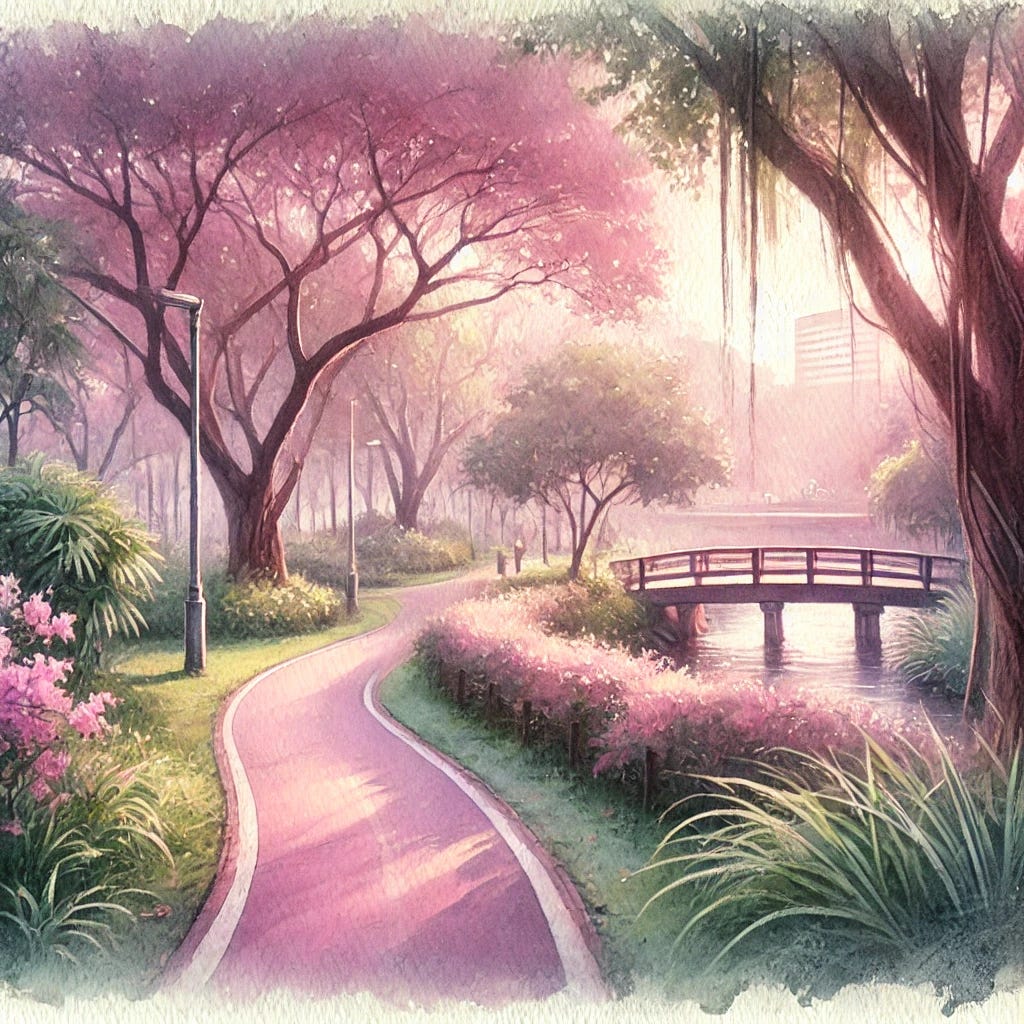It was meant to be like any other run at East Coast Park, Singapore—Early evening, gentle breeze, clear blue skies, towering green trees, and an underpass leading from my neighborhood straight into the park.
What if I had moved houses? What if it was a different neighborhood, a different underpass? Just like all roads once led to Rome, where I live, all underpasses lead to East Coast Park.
I know this stretch like the back of my hand—every water point, food court, pond, skatepark, tree, even the bumps on the path. I expected everything to feel the same.
But as I emerged from the underpass, something felt...off. Not in a bad way—just unfamiliar.
I had landed right next to the green bridge.
The green bridge is special to me. It’s a milestone. A marker of progress. It sits exactly 6.5K from my earlier home, meaning if I reached it, I was in for at least a 13K run (round trip). It had always been a finishing point, a landmark that whispered, You had a good running day.
Remember this post from before? ⬇️
The Green Bridge
There's something about the Green Bridge. I don’t remember my first time there, but I'm sure I was thrilled. Nothing grandiose about it — it’s a simple, concrete bridge, surrounded by lush greenery on both sides. Maybe that's why it's painted green.
But today, the green bridge wasn’t the end. No fast-beating heart, no exhausted but exhilarating triumph.
Today, it was the beginning.
I did my warm-up there, of all places. And it felt so weird.
Association bias
We constantly associate objects, ideas, experiences—even people—with either pain or pleasure. My brain had wired the green bridge with accomplishment, with a “pat on the back.” So standing there before the run felt completely wrong.
This is called association bias. It’s a mental shortcut our brains take to make sense of the world—quickly.
A friend visits your home, and you get a job promotion. Suddenly, they become your lucky charm.
Another friend meets you, and you get into an accident. Now, you subconsciously avoid them.
You enter a bookstore playing a song you love, and now, every time you hear that song, it reminds you of that bookstore.
Brands thrive on this.
Remember Pepsi? We associated it with coolness because the biggest stars endorsed it. Remember Fevicol? We associated it with fun because of their hilarious ads.
Think of all the unconscious associations we make while traveling, shopping, meeting people…
We assume expensive means high quality (not always true). Just like ⬇️
We assume confidence means competence.
We assume familiarity means safety.
We assume first impressions are always right.
Now if you believe your “lucky socks” make your presentation go well, that’s harmless. Maybe they just boost your confidence. And you end up actually performing well.
It gets bad when it’s about negative associations.
If a single “bad omen” rattles you—Every time I see a yellow car, my day goes wrong—that’s when it starts harming you.
When associations go deep
Sometimes, associations build gradually through repeated exposure. This is what Russian scientist Ivan Pavlov demonstrated when he conditioned dogs to salivate at the sound of a bell—because it always preceded food.
Other times, a strong stimulus forms an instant association.
Once, I received terrible news from my family at 7:00 a.m. Now, every time my phone rings at 7:00 a.m., my stomach tightens before I even pick it up. Completely irrational—but very real to me.
Breaking free from association bias
Like any mental bias, the first step to overcoming it is awareness.
When you recognize that your brain is making arbitrary connections, you can start questioning them.
The most expensive café might not serve the best coffee.
The loudest person in the room might not be the most confident.
The busiest professional might not be the most successful.
The most charismatic leader might not be the most competent.
For me, I have to rewire my brain—to stop seeing the green bridge as the finish line.
I have to train myself to see it as the beginning.
And maybe, that’s the key to growth: rewriting the stories we tell ourselves about where things end… and where they begin.





Love your writing Prachi. It is relatable and I love the engagement it creates too. Couldn’t agree more on Association bias and the way to question or overcome is to be conscious…. Be aware you are making the bias and that’s exactly what your writing mentioned…. Recognize the subtle sign your body gives and be curious to question and understand the why behind that pull/feel/tightness/lightness/joy 😊
Deciphered “Association” beautifully.